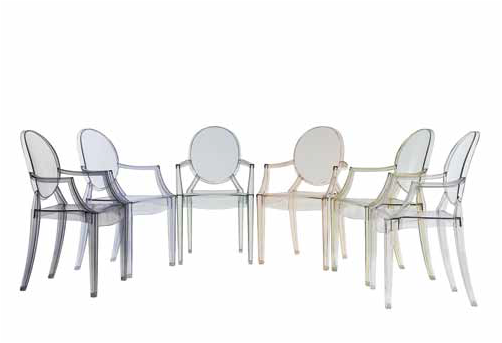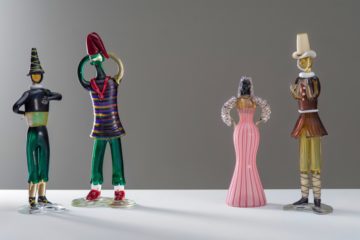
Plastic is fantastic – The story of an intelligent design brand
Kartell products talk about the mood and atmosphere of the period in which they were born, but at the same time they are “contemporary objects”, that bring with themselves many other values and messages and it is for this reason that they have become part of our domestic landscape.
Kartell was founded in 1949 in Noviglio, province of Milan, by Giulio Castelli, a chemical engineer who graduated gaining the “Nobel Natta prize” and started producing plastic objects: car accessories at first, followed by household goods, laboratory articles and lamps. The company faced two challenges: introducing plastic to everyday life and replacing glass with plastic for laboratory equipment. That meant the need for a completely innovative approach, based on technological research and design.
THE IDEA
“Castelli had studied Polytechnics, he was curious and a researcher by vocation. He had the good fortune to work in a time when there was a great deal of attention to these new materials. He had an commanding desire to check the possibilities in the most diverse domains and has had the opportunityto do so. At that time, experiments were easier: the moulds were cheaper and you could try more. We could say that he tried to lead the industry towards the house: quality objects, well-designed and made from innovative materials. At the origins of Kartell “there are technology, innovation and design” explains Claudio Luti, the present owner of Kartell.
THE FAME
Kartell’s identity was consolidated in the ’60s, during the international success of the “made in Italy design”, and entering the furnishing, meant international awards and a vast reputation abroad. The first sign: Kartell was invited by the Modern Art Museum (MoMA) of New York, to take part in the 1972 exhibition “Italy: the new Domestic Landscape”. That was the “design moment” for Kartell: three prototypes of cutting edge living solutions designed by 3 design icons – Gae Aulenti, Ettore Sottsass and Marco Zanuso – were produced and presented.
THE FAME
Kartell’s identity was consolidated in the ’60s, during the international success of the “made in Italy design”, and entering the furnishing, meant international awards and a vast reputation abroad. The first sign: Kartell was invited by the Modern Art Museum (MoMA) of New York, to take part in the 1972 exhibition “Italy: the new Domestic Landscape”. That was the “design moment” for Kartell: three prototypes of cutting edge living solutions designed by 3 design icons – Gae Aulenti, Ettore Sottsass and Marco Zanuso – were produced and presented.
THE FASHION INSIDER
Claudio Luti took over as the Company’s owner and Chairman in 1988, at the peak of the crisis in the plastic industry during the 80’s. Luti is the son-in-law of the founder Giulio Castelli. Therefore, him coming (from the fashion world) in an environment where the big “made in Italy” brands are almost all family businesses doesn’t seem so bizarre. But Luti brings a special added value: although he is an outsider in the product design world, he has the heritage of extensive experience of working at a huge brand like Versace. A positive contamination of fashion in product design was about to happen.
THE DESIGNERS
Collaborations with internationally acclaimed leading designers continue into the nineties, with names such as Antonio Citterio, Ron Arad, Vico Magistretti, Philippe Starck, Piero Lissoni, with whom Kartell signs unforgettable projects. A fundamental meeting was the one with a key designer: Philippe Starck. They started with a chair, and from that moment on, there was total identity. He confirmed to Lutti that they could make a totally different product from what was then on the market. They started to combine iron and polypropylene, to create opaque finishing instead of glossy and to experiment with colors. Starck kept insisting on creating pastel colors, based on the Japanese crayon box he owned. They added talc in various percentages to create a softer feeling to plastic. The result: Dr Glob Chair entered immediately in the important stores and was a great success.
THE MONEY
Kartell is, however, an industrial reality. The project can be changed countless times but when it comes to the mold, the idea must be clear. Why? Because the molds are very expensive and, once it is created, the objective is to produce a very high number of objects to break even and then make profit. For chairs, for example, the needed number is an average of 35 pieces per hour. Although the Kartell products often have a fashion look, they live much longer than fashion trends. This is also consistent with the logic of industrial production – to produce objects not only in large quantity, but which age very slowly.









